By G. L. Pease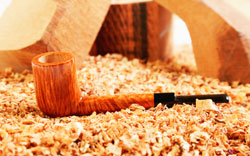 Welcome to the first episode of Ask G.L. Pease. (Can we call it an episode if it’s not on radio? How about edition? That’s more like it.) Some really fantastic questions have been sent in, and it wasn’t easy choosing from them for this edition, so this month’s is a little longer than it will usually be. If your question isn’t here, be patient. I’ll get to a few more of them next month.
Welcome to the first episode of Ask G.L. Pease. (Can we call it an episode if it’s not on radio? How about edition? That’s more like it.) Some really fantastic questions have been sent in, and it wasn’t easy choosing from them for this edition, so this month’s is a little longer than it will usually be. If your question isn’t here, be patient. I’ll get to a few more of them next month.
Q: Luigi asks, “I noticed that mostly blenders, talking about tins descriptions, they uses plenty of details when describing American based tobaccos, eg. Red Virginia, Dark Fired Kentucky, White Burley, etc. but when they mention eastern Europeans tobaccos, often they are describing them with a generic “Oriental” or “Turkish” ones. Nothing about Basma, Kavalla, Samsun, Izmir, etc. I wish to ask the reason of this common behavior, I suppose that these wonderful tobaccos coming to the blender already pre-mixed and him has no idea of which variety is included so he has to use these general descriptions, but I can’t swear if it is the reason. There would be a great gift for these pipe smokers that cares what they are loading in their pipes, to provide them more detailed descriptions, if it is possible. Thanks in advance for your answer!”
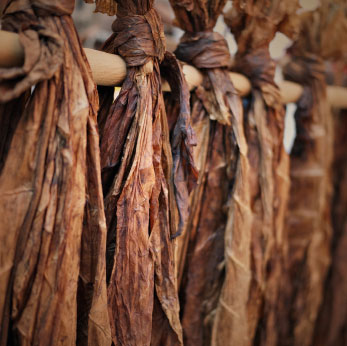 A: A great question, and one I wish I had a different answer for, but your guess is pretty much correct. When we buy air- and flue-cured leaf, we know exactly what we’re getting. This isn’t the case with oriental types. Most of the oriental tobaccos grown are bought up in contract purchases by the cigarette industry, who wants, of course, to be able to pick and choose what they will use from what is available. The easiest way to do this is to buy it all, so that’s pretty much what they do. There’s some excellent leaf left, of course, but not enough to satisfy Big Tobacco’s big appetite, so that stuff finds its way to leaf brokers who usually create sort of generic oriental “blends” that are of very good, consistent quality, but whose components are often so mixed that it’s all but impossible to identify them individually. For the most part, this is what’s used. Occasionally, some varietals are made available (we get some wonderful Izmir, for instance), or at least blends that exhibit distinct varietal character, and these are used for the spice they provide, and are often named in blend descriptions.
A: A great question, and one I wish I had a different answer for, but your guess is pretty much correct. When we buy air- and flue-cured leaf, we know exactly what we’re getting. This isn’t the case with oriental types. Most of the oriental tobaccos grown are bought up in contract purchases by the cigarette industry, who wants, of course, to be able to pick and choose what they will use from what is available. The easiest way to do this is to buy it all, so that’s pretty much what they do. There’s some excellent leaf left, of course, but not enough to satisfy Big Tobacco’s big appetite, so that stuff finds its way to leaf brokers who usually create sort of generic oriental “blends” that are of very good, consistent quality, but whose components are often so mixed that it’s all but impossible to identify them individually. For the most part, this is what’s used. Occasionally, some varietals are made available (we get some wonderful Izmir, for instance), or at least blends that exhibit distinct varietal character, and these are used for the spice they provide, and are often named in blend descriptions.
There’s another side to this. (Isn’t there always?) The naming of a specific oriental in a blend’s description may not always have any real meaning to the pipe smoker. It’s generally safe, for instance, to assume that there’s some Basma in these oriental blends, but it would be a bit misleading to list Basma as an ingredient of a finished product, since there’s no real way of knowing how much is present. It would be sort of like tossing a few strands of Syrian Latakia into the vat, and announcing its presence as though it’s a big deal. So remember to question what you read. Just because something isn’t a lie, doesn’t make it the truth.
Q: Steve asks, “I have smoked several of your tobaccos, (e.g. Abingdon, Odyssey, Westminister, Caravan and Meridian). I smoked Abingdon and Odyssey and Meridian the longest. With this background my question is why does Meridian, which I like the best, give me such a nicotine rush. None of the other tobacco listed above does that to me, only Meridian. Question, what is it about Meridian that gives me this rush? I have stopped ordering Meridian because of this kind of ‘light headedness’.”
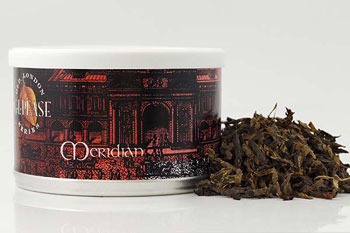 A: There is more involved in this phenomenon than just the aggregate nicotine content of the blend, which is what makes your question so interesting, but also so difficult to answer. Tobacco contains nicotine ranging in concentration from as low as 1-2%, to as high as 6-7%, and even higher, but it’s not all about the nicotine content of the leaf. Research shows that the higher the pH of the smoke (more alkaline), the more readily nicotine is made available to be absorbed through oral tissues. (Since, in general, pipe smokers don’t inhale, there are only two significant avenues of nicotine introduction: direct absorption through oral membranes, and by ingestion.) It turns out, a very small change in pH can result in large difference in absorption.
A: There is more involved in this phenomenon than just the aggregate nicotine content of the blend, which is what makes your question so interesting, but also so difficult to answer. Tobacco contains nicotine ranging in concentration from as low as 1-2%, to as high as 6-7%, and even higher, but it’s not all about the nicotine content of the leaf. Research shows that the higher the pH of the smoke (more alkaline), the more readily nicotine is made available to be absorbed through oral tissues. (Since, in general, pipe smokers don’t inhale, there are only two significant avenues of nicotine introduction: direct absorption through oral membranes, and by ingestion.) It turns out, a very small change in pH can result in large difference in absorption.
Burleys, which are amongst the highest in nicotine concentration, also tend to produce a more alkaline smoke, but since most burleys are sugared to make them less harsh, thus lowering the pH of the smoke, they don’t always “feel” strong, and are easily tolerated by many smokers. (If you want to get knocked on your can, smoke straight dark-fired Kentucky! Wait. Scratch that. I can’t afford to lose any customers.)
Virginias tend to produce more acidic smoke, and have less nicotine than burleys, in general, so they are usually perceived as “milder,” at least in regards to nicotine delivery. Orientals are the interesting confounder, and this is where some of your problem with Meridian probably comes from. These tobaccos tend towards the low end of the nicotine spectrum, but because of the absence of natural sugars, burn with more a higher pH than virginias. My guess is that even though the overall nicotine level of the blend probably isn’t much different from the others, the higher percentage of oriental leaf results in a more alkaline smoke, facilitating greater absorption of the available nicotine.
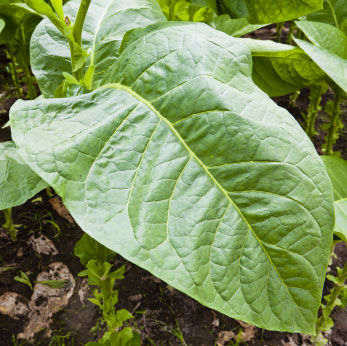 There’s also the possibility of a behavioral influence. You mention that you like Meridian the best of those you’ve tried. Is it possible that you’re smoking it with more gusto? I know that, for me, when I’m really enjoying a blend, I have to be more careful about my smoking cadence. I tend to want to take big bites of the stuff I love, rather than little nibbles. Maybe slowing down, consciously, just a little will help to ameliorate the rush. You’ll volatilize less of the nicotine, and absorb less of what’s there.
There’s also the possibility of a behavioral influence. You mention that you like Meridian the best of those you’ve tried. Is it possible that you’re smoking it with more gusto? I know that, for me, when I’m really enjoying a blend, I have to be more careful about my smoking cadence. I tend to want to take big bites of the stuff I love, rather than little nibbles. Maybe slowing down, consciously, just a little will help to ameliorate the rush. You’ll volatilize less of the nicotine, and absorb less of what’s there.
Q: Winton asks, “I am still fairly new to smoking a pipe. I have tried a couple aromatics and some english. If you were to suggest between 5-10 sample blends that gave the broadest spectrum of the pipe tobacco universe, what would they be? Please consider flavor along with shape (plug, flake, etc). I am more interested in the categories, than a particular blend.”
A: Great question! Off the top of my head, I’d say that a good cross-section of tobacco styles could be explored through sampling from these broad categories:
- Straight virginia flake and ribbon.
- A virginia/perique flake or cake and ribbon.
- A virginia/oriental mixture, not containing Latakia.
- Mild, medium and full Latakia mixtures.
- A burley/virginia blend.
- A straight, flavored, or at least sweetened burley.
I recommend, at least in the beginning, sticking with a particular category long enough to get to know it, rather than bouncing from one to another, which can confuse your palate. In fact, sticking with a particular blend for a few days has a lot of merit in deepening your understanding of the tobaccos. In time, you’ll develop an almost intuitive feel for what you’re smoking. (Though, you’ll still get fooled once in a while. Trust me on that one!) There are a number of resources that will offer reviews and pointers towards specific brands and blends. Be a little methodical, take good notes, and enjoy the journey. That’s really what it’s all about.
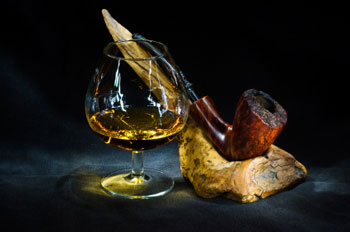 Q: Ethan poses two questions. “There’s a lot of talk about what types of tobacco go best with certain pipes shapes. Therefore, this is a two part question. 1) What separates an English blend from an Oriental blend? The vast majority of English blends have Oriental leaf, so is there a difference between the two? 2) Do you buy into the pipe geometry / tobacco style pairings? If so, how do you pair them?”
Q: Ethan poses two questions. “There’s a lot of talk about what types of tobacco go best with certain pipes shapes. Therefore, this is a two part question. 1) What separates an English blend from an Oriental blend? The vast majority of English blends have Oriental leaf, so is there a difference between the two? 2) Do you buy into the pipe geometry / tobacco style pairings? If so, how do you pair them?”
A: In the contemporary vernacular, “oriental blend” has come to connote a tobacco comprising virginias and oriental leaf, though this wasn’t always the case. In some of the old marketing literature, Latakia was lumped into the broader classification of “oriental,” and often not mentioned at all in blend descriptions, while today, Latakia is almost universally treated as a classification in its own right. Now, if it’s not mentioned in the description, it’s probably not there. (There are exceptions, of course, such as when the percentage is so low as to be almost undetectable.) The nebulous term “English blend” is something I’ve written about before; in short, it generally refers to a Latakia mixture with orientals and virginia tobaccos. I’ll save space here by referring you to What is a Balkan Blend? for more details.
As for pairing tobaccos with pipes, as much as I’d like it to be different, there’s no formula. Every pipe, every tobacco and every smoker is different, and the myriad interactions that exist are part of a complex, non-linear system that, even with some seriously simplifying assumptions, defies even first approximation analysis. The other night, I was marveling at just how much difference there was between two bowls of the same tobacco, smoked in very similar pipes. One delivered a sweet, bright, virginia forward flavor, while the other was deep, dark and earthy tasting. My collection consists of pipes of every size, shape, country of origin and price range. Part of the joy of getting to know each pipe is discovering what type of tobacco it gets along best with. After 30 years of playing in this sandbox, I’ve found nothing that will tell me, in advance of the smoking, what blend or style will work best with what pipe. There will be more on this in an upcoming column in Out of the Ashes.
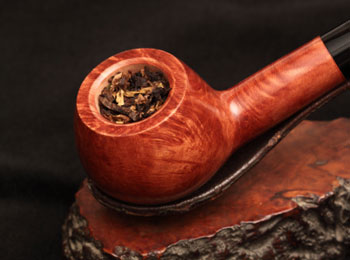 Q: Glenn wants to know, “How do you choose that “go to” blend of tobacco? As a newer smoker I still am not sure if I have found “that” blend. What expert advice is there for finding a persons everyday blend?”
Q: Glenn wants to know, “How do you choose that “go to” blend of tobacco? As a newer smoker I still am not sure if I have found “that” blend. What expert advice is there for finding a persons everyday blend?”
A: The only thing I can suggest is to try things until you find the right general direction, and then focus on those qualities that appeal to you most. Do you like a sweeter taste, or a spicier aspect? Are you after something deep and rich, or bright and zesty? Is the room aroma important to you? While you’re exploring, keep in mind that your tastes may change from time to time, depending on a lot of factors. Today’s “Go To” blend might be tomorrow’s “Has Been.” If that happens, just remember that these things are often cyclical, and you may find yourself navigating familiar waters again in the future. Above all, pipe smoking isn’t about formulae, or the quickest way to “get there.” It’s about the journey, and as long as you’re enjoying it, you’re doing it right. “That” blend will reveal itself when it’s ready.
And, finally:
Q: Kevin asks, “I would like to know if it is true that pipe smoking actually makes you smarter, and if you are a female, it makes your boobs bigger. Is this true, and if so, why?”
A: It is true, though despite a great deal of research, the causes behind these phenomena have baffled investigating neuropsychologists, as well as plastic surgeons, for decades, so I’m sorry to say, there’s no clear answer to your question.
Keep them coming! (SUBMIT QUESTIONS HERE.)
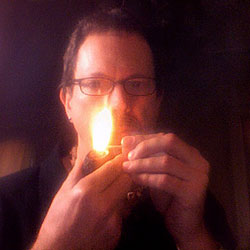
Since 1999, Gregory L. Pease has been the principal alchemist behind the blends of G.L. Pease Artisanal Tobaccos. He’s been a passionate pipeman since his university days, having cut his pipe teeth at the now extinct Drucquer & Sons Tobacconist in Berkeley, California. Greg is also author of The Briar & Leaf Chronicles, a photographer, recovering computer scientist, sometimes chef, and creator of The Epicure’s Asylum. |


















Great first offering Greg.
I look forward to reading more of these wonderful questions and answers.
FINALLY! Now I have proof! Straight from the horse’s mouth!
Q: Kevin asks, “I would like to know if it is true that pipe smoking actually makes you smarter, and if you are a female, it makes your boobs bigger. Is this true, and if so, why?”
A: It is true…
Seriously, great article Kevin, Greg and Luigi, Steve, Winton, Ethan, and Glenn. I was really looking forward to this column and it delivered in spades. Keep the fire stoked, fellas.
Thanks for the kind words, guys. Keep the questions coming! Who knows? Maybe this will become more than a monthly! 😉
Excellent article to all involved particularly, Mr. Pease. Thanks for your insight!
-Jason
Thanks Greg. I’m with you on the topic of pairing tobaccos with pipes…
This has long been a source of discussion, with no shortage of theory and
opinions. Without having empirical evidence to either prove or disprove
these different viewpoints, we are left with a common theme of individual
preference. Oddly enough, as I continue try and get a grasp on this issue, I’m
leaning more into believing that the primary influence is the quality and character
of the Block used to make the Pipe. It seems that we all have a favorite theory…
…I’m buying my wife a pipe. No, two.
Thanks for this!
This is a great article! Thanks Greg! I love reading these details.
“It’s generally safe, for instance, to assume that there’s some Basma in these oriental blends, but it would be a bit misleading to list Basma as an ingredient of a finished product, since there’s no real way of knowing how much is present.”
Unless, of course, one purchases pipe tobacco from a trusted company with the resources to use varietals meaningfully. It would seem that a pipe tobacco producer is being both truthful and useful when listing both individual Oriental leaf varietals on some of their blends (e.g., Katerini, Yenidje, Basma, Drama, Samsun, etc.) and also using generic terms (e.g., Turkish, Oriental, Macedonian, Greek) on other of their blends.
where do we send our questions??? 🙂
i’ve got one for the next instalment!
thanks greg, always a pleasure to read some of your thoughts.
Submit questions here:
https://pipesmagazine.com/blog/ask-g-l-pease/ask-g-l-pease-to-debuts-on-pipesmagazinecom/
Great opening, Greg. All great questions. Especially good were the questions of Luigi and Ethan with kudos to Keven for his depth of curiosity.
I’ve struggled with the pipe/blend matchup and have never been able to quantify or prognosticate results. Gotta just keep smoking I guess.
Interesting read! Thank you.
Fred, there’s certainly no shortage of theories! I’ve discussed the “Great Smoking PIpe” thing in my latest column, Indistinguishable from Magic. No conclusions, but that isn’t the point, is it? 😉
it’s interesting. For me, part of the joy of the pipe has always been finding those outstanding experiences that stand out against a sea of really good ones. You know the smokes I mean. You’ve got a good pipe, and a good tobacco, but one day, you change some little thing, and bells ring. You sit back and savor every puff, wishing it would never end. Sometimes, it’s an old ghost coming through in what I like to call a “crossover smoke,” as when switching a pipe from virginias to Latakia mixtures, or vice versa. Sometimes, it’s just the way a particular pipe harmonizes with a certain tobacco. Beautiful!
I guess what I’m on about is that following some sort of formulae can, in some cases, produce satisfying results, but breaking free of the monotony, exploring outside of formulaic boxes is where the magic usually happens. Recipes are suggestions, not rules, and when it comes to a great pipe, the briar itself is at least as important, if not more so, than airway size, chamber geometry, packing technique, or anything else.
Greg,
What effect if any does grain have on smoking performance? I have a handmade straight grain that darkened more than any other “natural” finish pipes in my collection. Of course, this could be due to many factors. Your thoughts?